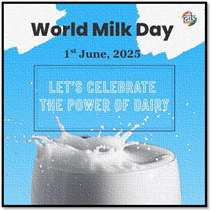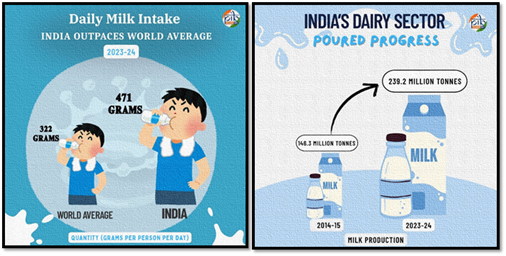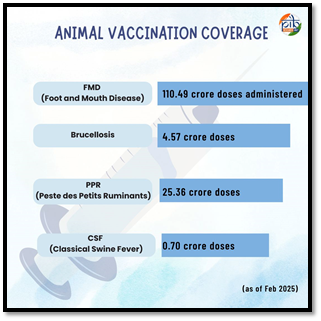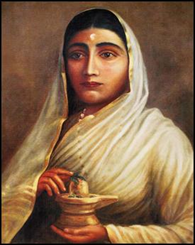Topic- 1: NAKSHA (National geospatial Knowledge-based land Survey of urban HAbitations) programme
GS- 2 & 3: Governance and Economy
The context:
The Department of Land Resources (DoLR), Ministry of Rural Development, Government of India, is going to conduct the second phase of capacity-building under the NAKSHA (NAtional geospatial Knowledge-based land Survey of urban HAbitations) programme from 2nd June 2025, across five Centres of Excellence (CoEs) in the country. The first phase of capacity building programme to train the 160 master trainers from NAKSHA participating states/UTs has been completed in the month of May 2025.
The Key Highlights:
-
- Under this training programme, 304 ULB-level and district officers have been nominated from 157 Urban Local Bodies (ULBs). These officers will undergo hands-on training in leveraging modern geospatial technologies for effective urban property surveys. The training will be conducted for a week starting from 2ndJune 2025 at the following Centres of Excellence institutions:
- Lal Bahadur Shastri National Academy of Administration (LBSNAA), Mussoorie, Uttarakhand
- Yashwantrao Chavan Academy of Development Administration (YASHADA), Pune, Maharashtra
- Northeast Region Centre of Excellence, Guwahati, Assam
- Mahatma Gandhi State Institute of Public Administration (MGSIPA), Chandigarh, Punjab
- Administrative Training Institute (ATI), Mysuru, Karnataka
The training aims to equip ULB officers and field staff with the technical and practical skills required to oversee high-accuracy land surveys under the NAKSHA programme. Modules cover the programme framework, GNSS and ETS-based surveying, Web-GIS application, land parcel mapping, and the legal-administrative aspects of land surveys.

About NAKSHA (NAtional geospatial Knowledge-based land Survey of urban HAbitations) programme:
-
- It is a city survey initiative under the Digital India Land Records Modernization Programme (DILRMP).
- India’s urban population expected to exceed 600 million by 2031, the need for modern, verifiable, and easily accessible land records has become more urgent than ever.
- The NAKSHA programme addresses this challenge with a bold, technology-driven approach.
- NAKSHA programme is being implemented by the department of Land Resources (DoLR), Government of India in association with the Survey of India, NICSI, MPSeDC, and five Centres of Excellence, as a pilot programme.
- NAKSHA has been launched across 157 Urban Local Bodies (ULBs) in 27 States and 3 Union Territories.
Source: PIB
Topic- 2: World Milk Day 2025
GS-3: Economy
The context:
From the first drop a baby tastes to the energy boost an athlete needs; milk stays with us through every stage of life. Rich in calcium, protein and essential nutrients, this simple white liquid plays a big role in building strong bones, boosting immunity and supporting overall health. Recognising its immense value, the world comes together every year on June 1 to celebrate World Milk Day. It’s a day to honour not just a drink but a symbol of nourishment, livelihood for millions of dairy farmers and a key part of our everyday diet.

Recognizing Milk’s Global Significance
-
- Recognizing just how essential this simple white liquid is, the Food and Agriculture Organization (FAO) of the United Nations declared June 1 as World Milk Day back in 2001. Since then, this day has been celebrated globally to acknowledge milk’s importance as a universal food.
Every year, World Milk Day shines a spotlight on the multiple roles dairy plays:
-
- As a source of good health and nutrition
- As a pillar of economic stability, especially in rural communities
- As a sustainable practice when responsibly managed
- And as a lifeline for millions of farmers who depend on dairy for their livelihood
This year, the theme for World Milk Day 2025 is: “Let’s Celebrate the Power of Dairy.” It’s a call to honor dairy not just as food but as a force that nourishes bodies, sustains communities, and drives economies.
From Milk Deficit to Dairy Powerhouse
-
- India is a global leader in milk production but it wasn’t always like this. At Independence, the country faced a severe milk shortage. It produced less than 21 million tonnes annually.Per capita milk availability was only 124 grams per day in 1950-51.
- A major turning point came in 1965 when the National Dairy Development Board (NDDB) was created. Dr. Verghese Kurien, known as the Father of the White Revolution, was appointed to lead it.
- This laid the foundation for Operation Flood (1970–1996),one of the world’s largest rural development programs.
By the end of Operation Flood:
-
- Over 73,000 dairy cooperatives were established
- 700 towns and cities received quality milk daily
- India became self-sufficient in milk and even began exporting milk products.
India’s Milk Growth
This started a big change in India’s milk industry. India’s dairy sector grew fast and became important both nationally and globally.
World Milk Scenario
India has been the number one milk producer since 1998. It now produces 25 percent of the world’s milk. While global milk production grows by 2% each year, India’s milk availability per person has increased by 48% in the last ten years. In 2023-24, the average Indian gets over 471 grams of milk daily, much higher
than the world average of 322 grams.

India’s Dairy Growth:
-
- India’s milk production has seen remarkable growth over the past decade. Between 2014-15 and 2023-24, milk production rose by 63.56% from 146.3 million tonnes to 239.2 million tonnes. This means the country has maintained an impressive annual growth rate of 5.7% over the last 10 years. This steady rise not only meets the nutritional needs of India’s large population but also shows how efficient and productive the dairy sector has become.
- In 2023-24, Uttar Pradesh was the top milk-producing state. It contributed 16.21 percent of India’s total milk output. West Bengal showed the fastest growth in milk production. It recorded a growth rate of 9.76 percent compared to 2022-23.
Livestock & Bovines in India: This remarkable increase underscores the dynamic nature of India’s dairy sector, which supports a vast livestock population of 303.76 million bovines, and 74.26 million goats. India proudly holds the title of the world’s largest livestock owner, with a total livestock population of 536.76 million.
Job Market & Farmer Participation: India has made significant strides in the cooperative sector. Within this sector are 22 Milk Federations/Apex Bodies, 240 district cooperative milk unions, 28 marketing dairies and 24 Milk Producer Organizations. These organizations encompass approximately 230,000 villages and include 18 million dairy farmers as members.
A notable aspect of India’s dairy industry is the substantial involvement of women, with 35 percent of women participating in dairy cooperatives. There are 48,000 women dairy cooperative societies operational at the village level nationwide, fostering inclusive growth and empowering women in rural areas.
Economic Contribution: India’s dairy is the single largest agricultural commodity, contributing 5 percent to the national economy and directly employing more than 8 crore farmers. India’s milk production has grown remarkably over the past decade, with a Compound Annual Growth Rate (CAGR) of 6 percent.
Schemes Driving India’s Milk Revolution
-
- Milk production in India is being actively supported through various schemes and programmes introduced by the Department of Animal Husbandry and Dairying. These initiatives aim to boost milk output, improve bovine productivity, and make dairying more profitable for rural farmers.
Rashtriya Gokul Mission
-
- Rashtriya Gokul Mission was launched in December 2014 to develop and conserve indigenous bovine breeds in a scientific and holistic way. The revised mission has been approved with an allocation of Rs 3400 crore for the 15th Finance Commission period from 2021-22 to 2025-26. Under this mission, the Nationwide Artificial Insemination Programme provides free Artificial Insemination services at the farmer’s doorstep in 605 districts. For the first time in the country AI services delivered free of cost at farmers’ doorstep under the programme. As on date 87 crore animals have been covered, 13.43 crores Artificial Insemination have been performed and 5.42 crores farmers benefitted under the programme. The aim is to raise the Artificial Insemination coverage from 30 percent to 70 percent.
National Programme for Dairy Development (NPDD)
-
- It was launched in February 2014 to improve the dairy sector across the country. The scheme was restructured in July 2021 and is being implemented during the period 2021-22 to 2025-26. The primary aim of NPDD is to create and strengthen infrastructure for the production of quality milk, as well as for its procurement, processing and marketing. The programme is being implemented through State Implementing Agencies, specifically the State Cooperative Dairy Federations, to ensure better coordination and reach at the grassroots level.

Livestock Health & Disease Control Programme (LHDCP)
-
- On 5thMarch 2025 Cabinet approved revised version of LHDCP. The scheme has three components namely National Animal Disease Control Programme (NADCP), Livestock Health & Disease Control (LH&DC) and Pashu Aushadhi. LH&DC has three sub-components i.e. Critical Animal Disease Control Programme (CADCP), Establishment and Strengthening of existing Veterinary Hospitals and Dispensaries – Mobile Veterinary Unit (ESVHD-MVU) and Assistance to States for Control of Animal Diseases (ASCAD).
- The Pashu Aushadhi is new component added to the LHDCP scheme. The total outlay of the scheme is Rs.3,880 crore for two years i.e. 2024-25 and 2025-26, which includes provision of Rs. 75 crore to provide good quality and affordable generic veterinary medicine and incentive for sale of medicines under Pashu Aushadhi component.

Under LHDCP, vaccination against Foot and Mouth Disease (FMD), Brucellosis, Peste des Petits Ruminants (PPR) and Classical Swine Fever (CSF) is fully funded by the Government of India for all States and Union Territories.
National Livestock Mission: It was launched in 2014-15, underwent revision and realignment in the 2021-22 financial year. The mission aims to boost employment, support entrepreneurship, and increase per animal productivity, leading to higher production of meat, goat milk, eggs, and wool. Surplus production is expected to support exports after fulfilling domestic needs.
The scheme has three Sub-Missions:
1. Breed Development of Livestock & Poultry – Focus on improving genetic quality and productivity
2. Feed and Fodder Development – Ensure availability of quality feed and fodder
3. Extension and Innovation – Promote awareness, training, and innovation in livestock farming
About the Animal Husbandry Infrastructure Development Fund:
-
- It was launched on 24thJune 2020 by Prime Minister under Atmanirbhar Bharat Abhiyan Initiative. The scheme has been approved for incentivizing investments by individual entrepreneurs, private companies, MSME, Farmers Producers Organizations (FPOs) and Section 8 companies to establish
1. The dairy processing and value addition infrastructure
2. Meat processing and value addition infrastructure
3. Animal Feed Plant
4. Breed improvement Technology and Breed Multiplications farms.
Kisan Credit Cards (KCC) for Dairy Farmers of Milk Cooperatives And Milk Producer Companies: Kisan Credit Card (KCC) facility has been made available to livestock and dairy farmers for the first time since 2019 enabling easy and increased access of institutionalized credit facility to them.
Conclusion:
India’s journey from a milk-deficient country to the world’s largest milk producer is a story of resilience, vision, and collective effort. From the launch of Operation Flood to the adoption of modern practices and farmer-focused schemes, we have come a long way in empowering rural communities and ensuring nutritional security. However, this journey is far from over. The path ahead demands continuous innovation, greater use of technology, and sustained support to our dairy farmers. With each step forward, we move closer to building a healthier, self-reliant, and stronger India through a vibrant and inclusive dairy sector.
Source: PIB
Topic- 3: Lokmata Devi Ahilyabai Holkar
GS-1: Modern History/Personality
The context:
On May 31, 2025, on the occasion of the 300th birth anniversary of Lokmata Devi Ahilya Bai Holkar, Prime Minister of India inaugurated and laid the foundation stone of multiple development projects in Bhopal. Further, the government released a commemorative postage stamp, and a special coin dedicated to Devi Ahilyabai. The Rs 300 coin will feature a portrait of Ahilyabai Holkar. The National Devi Ahilyabai Award was also presented to a woman artist for contribution in tribal, folk, and traditional arts.
The key Highlights:
-
- On September 20, 2024, the Prime Minister launched ‘Punyashlok Ahilyadevi Holkar Women Startup Scheme’, in which early-stage support will be provided to women-led startupsin Maharashtra. Financial assistance up to ₹25 lakh will be provided under the scheme. 25% of the total provisions under this scheme will be reserved for women from backward classes and economically weaker sections as specified by the government.
Life History of Ahilyabai Holkar:
-
- Rajmata Ahilyabai Holkarwas the Holkar Queen of the Malwa kingdom. She is regarded as one of the most visionary female rulers of India. In the 18th century, as the Maharani of Malwa, she was instrumental in spreading the message of dharma and propagating industrialization. She is widely known for her wisdom, courage, and administrative skills.
- Born on May 31, 1725, in the village of Chondiin Jamkhed, Ahmednagar (Maharashtra), Ahilya hailed from a very humble background. Her father Mankoji Rao Shinde was the village head, and he taught her to read and write.
- As a young girl, the combination of her simplicity and strength of character caught the attention of Malhar Rao Holkar, the Lord of the Malwa territory. He was so impressed with the young Ahilya that in 1733he got her married to his son Khanderao Holkar.
- Twelve years after her marriage, her husband Khanderao died during the siege of the Kumher Fort. Ahilyabai was so grief-stricken that she decided to commit sati.
- It was her father-in-law, Malhar Rao who preventedher from taking such a drastic step. Instead, he took her under his wing and trained her in military and administrative matters.
- Her father-in-law, Malhar Rao passed away in 1766, and in the following year, she lost her son, Male Rao. She did not let the grief of losing her son overwhelm her. Keeping in mind the welfare of the kingdom and her people, she petitioned the Peshwa to allow her to take over the reign of Malwa.
- Although some of the nobles objected to this, she still had the support of the army,who had full faith and confidence in her, as she was well trained in military and administrative matters. On many an occasion, she had led the army from the front and fought like a true warrior.
- In 1767, the Peshwa granted Ahilyabai permission to take over Malwa. She ascended the throne and became the ruler of Indore on December 11, 1767.

Her Rule and Governance
-
- Ahilyabai took control of Malwa after her husband’s death in the battle of Kumherin 1754. She then laid the foundation of the indomitable Holkar army in 1792 and became one of the most feared archers of her time.
- Maharani Ahilyabai ruled over Malwa in a just, wise, and knowledgeable manner. Under Ahilyabai’s rule, Malwa enjoyed relative peace, prosperity, and stability,and her capital, Maheshwar, was turned into an oasis of literary, musical, artistic, and industrial pursuits. Poets, artists, sculptors, and scholars were welcomed into her kingdom, as she held their work in high regard.
- She held daily public audiencesto help redress the problems of the common man. She proved to be not only a capable ruler but also a guardian and guide for her people. Her governance extended well beyond Indore, and her initiatives were reflective of both compassion and foresight.
Contributions for Building the Nation
-
- She established a textile industry in Maheshwar, which today is very famousfor its Maheshwari sarees. She turned her attention towards various philanthropic activities, which ranged from the construction of temples, ghats, wells, tanks, and rest-houses in the north to pilgrimage centres in the south. Her most notable contribution was the renovation and repair of the famous Kashi Vishwanath Temple in 1780. Recognizing this contribution of hers, a statue of Devi Ahilyabai Holkar has been installed in Kashi Vishwanath temple. Devi Ahilyabai is also credited for the construction of Old (Juna) Somnath temple in Gujarat. Interestingly, this temple is popularly known as the Ahilyabai temple. This temple was reconstructed recently and was inaugurated by the Prime Minister on August 20, 2021.
- With a keen interest in religion and charity, she built numerous templesincluding two of the twelve Jyotirlingas. Her charity extended beyond her territory to the rest of India. Respected historians have sung her praises in their books.
- Ahilyabai initiated the construction of roads and rest housesacross India and restored temples at pilgrimage sites like Haridwar, Kashi, Somnath, and Rameshwaram. Her vision, however, extended beyond religion — she supported farmers and expanded trade.
- She established many gurukuls and schools. In a revolutionary move for her time, she formed a women’s armyand trained them in warfare, self-defense, and administrative security. This force came to symbolize state defense, law and order, and women’s empowerment.
Legacy of Ahilyabai Holkar
-
- The ‘Philosopher Queen’ as she is famously known, passed away on August 13, 1795at the age of seventy. Her legacy still lives on and the various temples, Dharamshalas, and public works undertaken by her stand as a testimony to the great warrior queen she was. Ahilyabai’s legacy further lives on through the forts she built but also in the reforms and values she championed. Her life remains a beacon of guidance for society. Prime Minister Narendra Modi highlighted that when the Vishwanath temple was destroyed, it was Ahilyabai Holkar who had it rebuilt.
- While her birthplace was in Maharashtra, her life’s work spanned across Indore, Maheshwar, and many other regions. The ghats of Maheshwar, the waves of the Narmada, and India’s cultural heritage continue to sing praises of her remarkable legacy. She was the powerful, influential woman who successfully transformed Indore village to the magnificent city that it is today.
Source: PIB
Spread the Word
